Plastics derived from organic materials. They can be moulded into any required shape and consistency. This characteristic allows plastics to be implemented into a great variety of products.
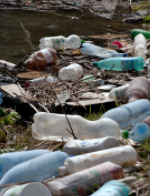
image source: https://search.creativecommons.org/photos/dee5120c-d349-4716-94a3-9690f3137ff5 by Horia Varlan
Most plastics are derived from organic materials, that is, substances made from things that have lived, including oil, cotton, sugar cane, coal, corn and many others. There are however exceptions such as silicone which is derived from sand.
Before processing, plastics consist of granules, pre-formed tablets, powders, syrups or pastes.

Image source: https://en.wikipedia.org/wiki/Recycling#/media/File:Scrap^_Will_Help_Win._Don’t_Mix_it_-_NARA_-_533983.jpg
Plastics are classified as:
- Natural, a material that can be moulded in its natural form. Examples are amber, gutta-percha, horn, rubber, and tortoiseshell.
- Semi-synthetic, that means, made of a chemically altered natural material. Examples are casein, cellulosic plastics and rubber.
- Synthetic, that is entirely laboratory-made, as is the case with phenol-formaldehyde and the many poly-plastics.
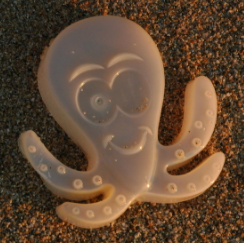
image source: https://search.creativecommons.org/photos/3e92afe6-0429-4a01-b348-7583def21483 by Wonderlane
Molecular structure

image source: https://search.creativecommons.org/photos/fdc0b95d-7f56-4c64-856a-060670dab969 by DotShell at en.wikipedia
Plastics are based on polymers. That is a material made up of many smaller base units. The simplest plastic is polythene consisting of base units of carbon atoms with two hydrogen atoms to each carbon.

image source: https://search.creativecommons.org/photos/51096a4d-d3c3-4fb4-af2d-9f28d42aa41f by Zappy’s
The base unit is referred to as a monomer. Many monomer units linked together to create a polymer, through a chemical process known as polymerization. Polymerization can be visually explained by pinning together paper clips (base units) to form chains.
Different arranged chains produce plastics with different properties.
Plastics are divided into two distinct groups:
- thermosets, plastics that on being heated and moulded set permanently, and thus cannot be re-melted and re-formed.
- thermoplastics, plastics that will be re-melted after moulding again and again, and thus can be recycled by melting and reforming.
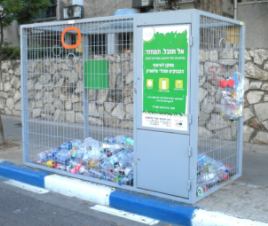
image source: https://search.creativecommons.org/photos/6d02a0f3-9fbe-4136-8bca-85ec7008a9e6 by Ariel Palmon
They owe their name to their most significant property, the power to be shaped to almost any form to provide articles of practical value. Plastics may be stiff and hard or flexible and soft. Due to their lightweight, low cost, and desirable properties, their use has rapidly increased and that they have replaced other materials like metals and glass. They’re utilized in various items, including cars, bullet-proof vests, toys, hospital equipment, and food containers. More than 100 billion pounds of plastic were produced in 2000.
Their increased use has resulted in concern with:
- the consumption of natural resources like oil;
- the toxicity related to their manufacture and use;
- the environmental impact arising from discarded plastics.
Additives
In many plastic products, the polymer is only one constituent. To obtain a set of properties appropriate to the product, the polymer needs to be combined with other ingredients, or additives mixed during processing and fabrication. Among these additives are:
- Plasticizers: Plasticizers are used to change the Glass Transition Temperature of a polymer. The plasticizer may also change the flammability, odour, biodegradability, and cost of the finished product.
- Colourants: The ease with which colour is incorporated throughout a moulded article is an advantage of plastics over metals and ceramics, which depend on coatings for colour. Organic mixtures can be applied to add colour either as pigments (insoluble) or as dyes (soluble).
- Reinforcements: Reinforcements are used to enhance the mechanical properties of plastic. Finely divided, can be incorporated as particulate fillers. Incorporating large amounts of particulate filler during the making of plastics can increase their stiffness.
- Stabilizers: they are added to plastic compounds in small quantities to avoid ageing. The properties should change as little as possible with time.
Antioxidants are common stabilizers in carbon-based polymers subjected to oxidations. Other types of stabilizers are created to overcome degradation by sunlight, ozone and biological agents.
Pollution Problems
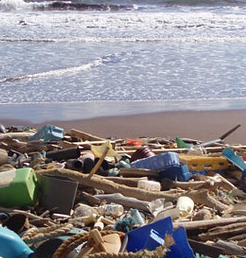
image source: https://search.creativecommons.org/photos/e6426545-5de2-4f4c-a6e5-91ad04e2b2f1 by NOAA’s National Ocean Service
Industrial applications in plastic manufacture lead to polluting effluents and the use of toxic intermediates, the exposure to which can be dangerous. Better industrial practices have led to minimizing the exposure of plant workers to harmful fumes. Much development has been made in improving “green processes” that avoid the use of detrimental substances.
Plastic pellets can find their way into sewerage systems, and eventually to the sea. This can cause harm to wildlife that may mistake the pellets for food. Better “housekeeping” of plastic moulding facilities is being enforced in an attempt to address this problem.
Plastics may also cause problems when improperly used. Therefore, better education is needed concerning conditions of use, for example, precautions that should be taken with items such as frying pan coatings and microwavable containers.
Reduced Use and Recycling
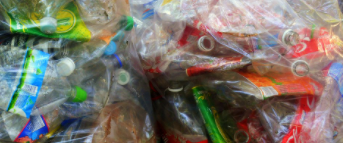
Image source: https://search.creativecommons.org/photos/176e57bc-e17f-460a-b5f3-b041277460db by Carl Campbell
Plastic usage can be reduced by more suitable options of container dimensions and distribution of liquid products in a more concentrated form.
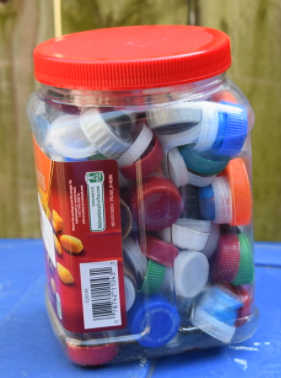
Image source: https://search.creativecommons.org/photos/1a0b98c1-4eb3-425a-aa91-ea982ff5f750 by Tobyotter
Recycling plastics is beneficial to avoid their accumulation in landfills. While plastics constitute only about 8 per cent by weight or 20 per cent by volume of municipal solid waste, their low density and slowness to decompose make them a visible pollutant of public concern.
Labelling plastic items with symbols enables consumers to identify them easily for placement in separate containers for curbside pickup. However, success depends on how conscientious consumers are in employing such standards and the ability of collectors to keep various types of plastic separate.
When plastic is separated, it is first required to identify the distinct types. One must also distinguish between thermoplastics and thermosets.
The capacity to recycle bottles appreciably exceeds their supply by about 40 per cent, so local governments and environmental groups need to encourage greater participation in this practice among consumers.
More quantities of plastic components appear in automobiles, and their restoration from junked cars is an opportunity. Its success depends on the ability of a prospective “junker” to identify and separate the plastic items.
The effort continues to employ fewer kinds of plastics and adopt designs that enable easier recycling but still maintain desirable characteristics. However, some products can be produced from mixed plastic, but the market is limited, so attempts to obtain separated plastics are favoured.
Degradable Plastics
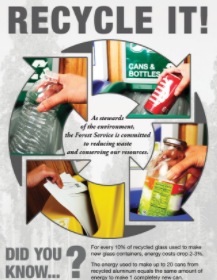
image source: https://search.creativecommons.org/photos/bb5b6194-d296-4791-80f6-5e800ba8c40f by Region 5 Photography
Discarded plastics are difficult to eliminate from the environment because they do not degrade and last a long time. It is possible to design polymers carrying monomer species that may be attacked by chemical, biological, or photochemical reactions so that degradation will occur over a planned time.
A problem with the degradation of plastics is leachants produced that may pollute water supplies. It is more beneficial in these situations to ship the plastics to composting facilities.
Degradable polymers aren’t very effective in the litter reduction and production of flushable plastics, but it is improbable that the use of such materials will be a viable means of disposal for large amounts of plastic products.
Trash to Energy
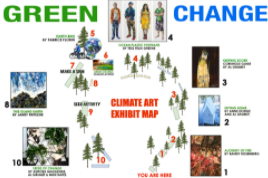
Image source: https://search.creativecommons.org/photos/3bc549fb-09c9-4c53-8bc6-f99dd6371d4f by fabola
A method of plastic disposal with more positive environmental implications is burning and recovering the energy for power generation or heating. Plastics contain much of the potential petroleum energy from which they’re made, and they, in a sense, are just borrowing this energy that will be recovered when the plastic is burned. Environmentalists and therefore the public have objected to the present procedure, resulting in legislative restrictions. However, it’s possible to construct a “high-tech” incinerator designed to work at appropriate temperatures and with sufficient air supply to minimize these problems. The remaining toxic substances in fumes is also removed by scrubbing.
Toxic ash mainly arises from other materials mixed with the polymers or fillers, catalyst content, and pigments; not from the polymer elements of the feedstock. Proper polymers configuration and crude separation of the incinerator feedstock can decrease this problem. Also, it’s possible to insolubilize the ash by converting it into a cement-like material that may not readily dissolve. Facilities for converting trash to energy in an environmentally acceptable way are expensive and not cost-effective when considering short-range funding. In the long run, they’re effective for environmental safety and reduce the requirement for alternative means for plastic waste disposal. It’s crucial that legislators and taxpayers quickly adopt this long-range perspective.
5 Cool Things You Never Knew About Plastic Materials
1) The roots of the plastic materials date from the 1600s when synthetic materials were made of bio-derived items like eggs and blood protein. the primary man-made plastic came over 200 years later when Alexander Parkes developed Parkesine, a material made of cellulose and treated with acid. the primary fully synthetic plastic, bakelite, was developed in 1907. Scientists have developed a large array of plastics with many special properties in just 100 years.
2) A species of fungus has been discovered within the Amazon which feeds on plastic and might do so without oxygen. While this won’t seem to be a giant deal, researchers are currently studying the fungus – and plastic – to work out if advances are often made in bio-remediation technology.
3) It’s estimated that energy saved from recycling one plastic bottle is enough to power a 100 watt light bulb for an hour. in keeping with the Environmental Protection Agency, recycling one ton of plastic is nice enough to conserve 3.8 barrels of rock oil.
4) Plastics play a big role in aviation and aerospace. Aerospace companies use plastic materials to create lighter planes. Some plastics, like PEEK, had best within the air because they’re chemical resistant, lightweight, and comparatively strong.
5) Plastic has played a central role in the development of the medical industry over the past 60 years. Swiss researchers recently developed a polymer that may be ingested in pill form and deliver dosage to the suitable parts of the body that require treating. Plastics have also had a large impact on the event of high-quality prosthetics. With 3D printing, there’s the likelihood of constructing custom prosthetics cheaper than ever before.
Info source:
http://www.craftechind.com/10-fun-things-you-never-knew-about-plastic-materials/
http://www.modip.ac.uk/resources/curators_guide/what_are_plastics
http://www.modip.ac.uk/resources/curators_guide/what_are_plastics
http://www.encyclopedia.com/science-and-technology/chemistry/organic-chemistry/plastics
https://www.britannica.com/science/plastic
http://www.encyclopedia.com/science-and-technology/chemistry/organic-chemistry/plastics
Please also visit: https://www.idesign.wiki
